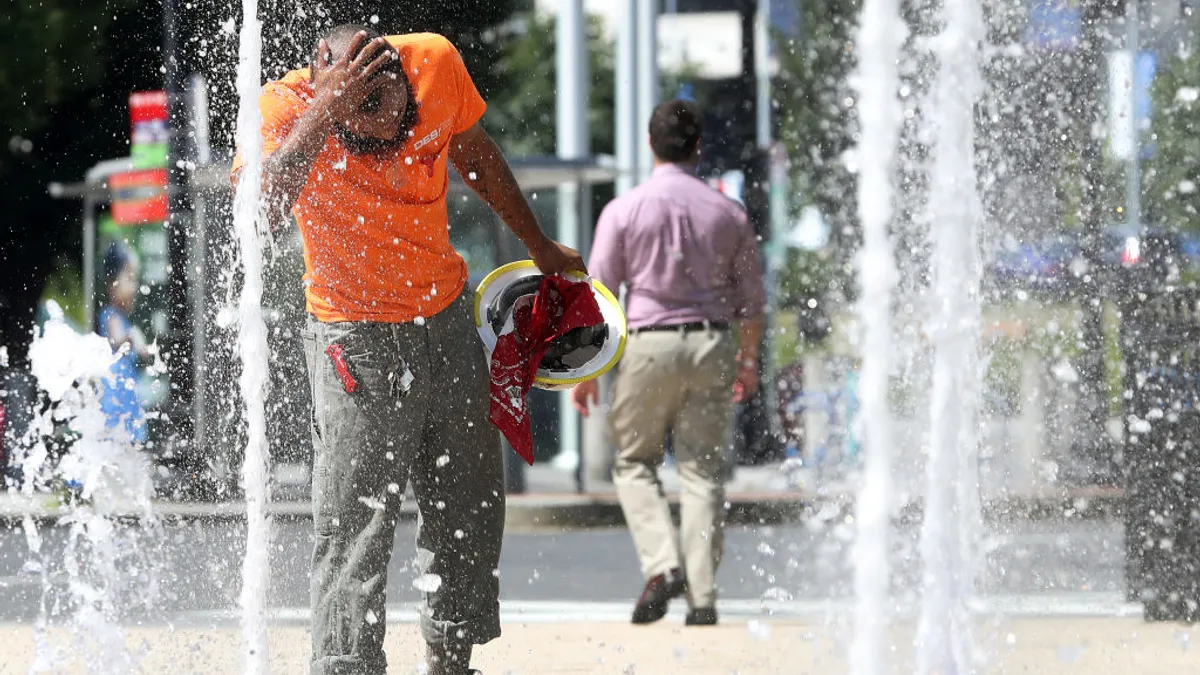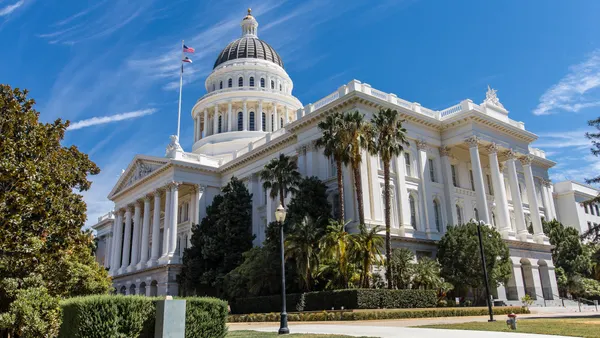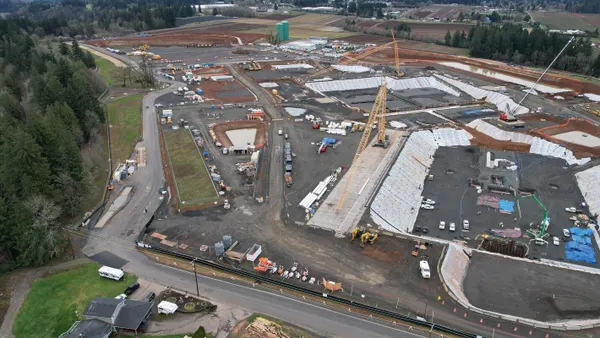As the remnants of Hurricane Ida slammed parts of the U.S. Northeast earlier this month, social media posts documented the extent of the storm system's impact. Particularly notable were videos from cities including New York, where flash flooding led to cascades of stormwater in some of the city's subway stations.
Wtf @NYCTSubway @MTA #newyork #newyorkcity pic.twitter.com/HissEixp9s
— ICONI3 (@ICONI3) September 2, 2021
In an interview with local television news station WNYW, Janno Lieber, acting chair and CEO of the city's Metropolitan Transit Authority, described how the storm's repetitive flash floods overwhelmed street level drainage systems and caused subway line closures.
"We all know that the subway system in New York is not a submarine," Lieber said. "In many cases it's actually — in my neighborhood in Brooklyn, it's above ground and an open cut. So, we definitely are subject to weather and water, especially when like last night the surface level, street level, drainage and sewer system is overwhelmed."
Be it sudden rain storms or heat indexes in the 100s, cities and neighborhoods across the U.S. have dealt with a wide range of extreme weather events in the past year. A warming global climate will intensify both very wet and very dry climate events and seasons over the course of this century, according to the Intergovernmental Panel on Climate Change's 2021 report. Examples include heatwaves, heavy precipitation and, in some regions, drought.
Crucially for employers, these weather events can directly affect workers. Ida's remnants shut down numerous rail, bus and light rail operations during the mid-week evening commute in the Northeast, including in New Jersey, news outlet NJ.com reported.
In Philadelphia, high waters shut down the Vine Street Expressway, a major portion of Interstate 676 that runs through the city's downtown area. Cleanup took several days as transportation officials pumped "[t]housands of gallons of water" from the area, local National Public Radio affiliate WHYY reported.
Yet despite the increased threat extreme weather events may pose in the future, both in terms of their intensification and frequency, climate change does not appear to rank highly on the list of future concerns for organizational leaders.
In an August survey of 333 in-house legal and business leaders, law firm Seyfarth Shaw found that only 14% of respondents ranked climate change as one of the top three "macro trends" that would shape their business landscape in the next 5-10 years. That is well below the 55% who said the same of advanced technology and automation or the 47% who ranked evolving labor markets and diversity, equity and inclusion, respectively.
But climate change is something employers are already thinking about, whether they are actually conscious of its impact or not, said Patrick Joyce, labor and employment associate at Seyfarth Shaw.
That is in part because of regulatory concerns. For example, several states on the U.S. west coast have implemented heat illness prevention requirements, some of which were newly introduced in 2021. In Oregon, the state's Occupational Safety and Health Administration issued in July two emergency temporary rules to protect workers from heat-related illnesses as a record-breaking heat wave impacted the region.
Specifically, Oregon employers were required to establish one or more shade areas; maintain an adequate and no-cost supply of drinking water; and ensure that all employees were trained on topics such as personal risk factors for heat illness when the heat index equaled or exceeded 80 degrees Fahrenheit. Additional requirements applied when the heat index exceeded 90 degrees Fahrenheit.
Joyce, who is based in Seattle, experienced the 2021 heat wave first-hand. On June 28, the city recorded its highest temperature ever at 108 degrees Fahrenheit.
"It was incredible, unique," Joyce said. "Clients were starting to think about not only those who work outdoors, but also at various facilities where indoor heat is an issue."
The heat wave also disrupted plans to return some workers to physical offices in light of the pandemic. Employers throughout the Pacific Northwest reversed course on those plans during the event, but in cities like Seattle, sending workers back home to work remotely may not have actually benefited those who lacked safeguards such as air conditioning in their homes, Joyce said.
And while employers in the region may be familiar with requirements to provide drinking water during summer months, indoor heat poses a relatively new challenge, Joyce added. That may be especially true for facilities that lack air conditioning technology.
But for other forms of extreme weather, such as severe rain events, the pandemic may actually benefit employers' preparedness, according to Bradford Bell, the William J. Conaty professor of strategic human resources at Cornell University's School of Industrial and Labor Relations.
"Given the events of last year and a half, many employers are better positioned to respond when these types of situations occur, partly because of the move to remote work," he said, "but more broadly, organizations pre-pandemic started adopting remote work even as a part-time type of arrangement to be able respond when these types of events happen and shut down an office."
That advantage does not mitigate the reality that many workers, including those most at-risk when extreme weather strikes, do not have the option to work remotely. According to a 2014 article by researchers at the National Institute for Occupational Safety and Health, climate change may translate to increased occupational hazards and exposures as well as new forms of these risks, particularly for outdoor workers, emergency responders, commercial fisherman, agricultural workers and a variety of other worker categories.
Employers that rely on in-person operations can take steps to protect employees, per Bell. In the most extreme scenarios, those in industries such as manufacturing may be able to close temporarily. Business continuity planning can also allow managers and employees to triage critical situations, but that requires employers to focus on well-being and safety in training, Bell said.
"They need to do scenario planning," he continued. "What are we going to do when the next big crisis hits?"
Some businesses have gained a reputation for preparedness during natural disasters. Regional restaurant chain Waffle House has even been used as a risk management case study for federal emergency management coordinators. In 2018, a former Waffle House executive spoke to HR Dive about the company's use of "jump teams" and other logistical hacks to quickly reopen even in the face of mandatory local evacuations.
Although emergency response planning is something that Joyce said more clients are asking about, he noted that many employers do not have plans in place to deal with the hazards presented by extreme weather events. "It's something employers should have in place and be thinking about," he added, "so that when these situations do arise, they can quickly turn to these plans and have steps that they go through and communicate with employees."
On the subject of extreme heat, employers got a key update from the White House last week when it announced plans for OSHA to create a federal standard addressing heat-related illnesses on worksites. An advanced notice of proposed rulemaking is set to be issued next month, followed by a period for public comment, per the announcement.
Joyce said a rulemaking is something regulators "have talked about for many, many years," though federal OSHA currently lacks a heat rule. He added the upcoming regulations could identify bullet points the agency will use to determine whether an employer may have violated the OSH Act's General Duty Clause with respect to protecting workers from heat-related illness.
Employers could address heat-related illness by having policies and procedures in place that address access to water and rest, as well as training that allows employees and managers to recognize signs of heat stress and illness, Joyce said. For employers in industries like construction, these types of preparation may already be commonplace. But regardless, employers need to ensure appropriate levels of communications about policies, he added.
Responding to climate change also necessitates a cross-functional approach, Bell said; "For organizations that do remote work well, it's not just HR. It's real estate, IT, all of these different types of resources."
While employers may not recognize the extent to which their organizations are actually preparing for and responding to climate change, Joyce said, HR teams need to be aware that the issue will likely persist into the future.
"It's not going away," he added. "It's unfortunately going to get worse."















